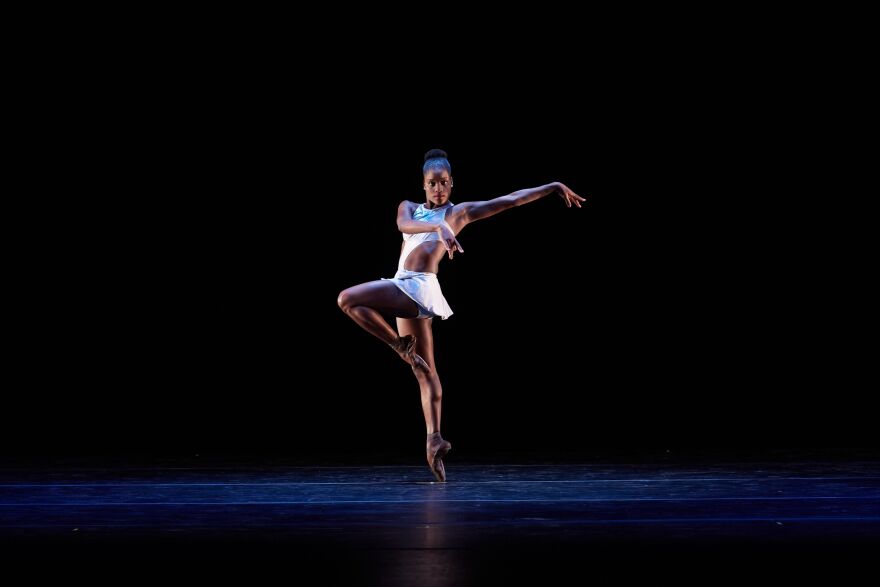Dance Theatre of Harlem celebrates African American culture and history and showcases that ballet as an art form is open to everyone — and they are in town to perform at the Belk Theater this Friday and Saturday.
Dancers rehearsed this week at the Belk as the company’s artistic director gave them a few tips. Some wore black or brown leggings that complimented their skin tones, while others donned colorful tutus or skirts. They stood tall, shoulders back, and heads upright, as they gracefully moved across the stage.
“I was one of those kids that was just dancing in hallways, doctors' offices and grocery stores. I always had that like, ‘I have to move inside of me,’” said dancer Amanda Smith. “And then ballet, in particular, there’s something about wearing a tutu and a tiara, tights and a pointe shoe that makes me feel regal and like a queen. And I think we should all be represented like that.”

Growing up Smith idolized Black ballet dancers like Misty Copeland. Copeland became the first African American female principal dancer at the prestigious American Ballet Theatre in 2015. Smith says Copeland’s example drove home that Black dancers like herself could make it in an art form where white faces are overwhelmingly featured.
“I didn’t see a lot of that in Orange County, California. I felt like it seemed impossible sometimes, and then, when you see that, it’s like, ‘Oh, it is possible,’ to see someone that’s living that life," Smith said. "It’s a very important thing to see, especially at a young age.”

Smith likes to wear bright colors when dancing and says she styles her hair to reveal her personality in a profession where many companies still embrace tradition and uniformity.
“We’re trying to push that boundary, that wall that keeps being put up, that this is our natural hair and I should be able to have braids. I should be able to have a curly French twist, or whatever,” said Smith. "Also, at the same time, there's still a neatness that needs to be about it. I’m very much about a clean look and, at the same time, representing your culture with your hair.”
Dance Theatre of Harlem was founded in 1969 by choreographer Karel Shook and Arthur Mitchell, the first Black principal dancer at the New York City Ballet. That was a year after the assassination of Dr. Martin Luther King Jr. The company’s artistic director, Robert Garland, says Mitchell wanted children in Harlem to have access to an art form he loved — and to challenge notions of what Black people could achieve.
“People did say [to Mitchell], ‘Harlem, Black people, ballet, it will never work.’ He opened a school first, and within two months, he had 500 students from Harlem,” said Garland. After that, he said Black dancers urged Mitchell to start a company, telling him: “We’ve been studying ballet all our lives; we have nowhere to perform it.’”
Dance Theatre of Harlem showed off their mastery of an 18th-century European art form and how it can grow and change beautifully and expressively.
Seventeen dancers will take the stage in Charlotte in a performance that will combine contemporary and classical work and reflect the history and culture of the African American diaspora.

“Both the opening and the closing of the program look into or go through that lens,” Garland said. The first piece, he says, combines that with the classical composer Johann Sebastian Bach to “produce something new and exciting.”
“I want them to be able to escape when they come to the show, to escape the world and just be in the art space, and enjoy it, and take in everything we’re delivering on the stage because it’s quite a good show. And we bear our souls on the stage,” said dancer Keenan English, who will perform in front of the Charlotte audience.
Dance Theatre of Harlem performs at the Belk Theater. It’s hosted by Blumenthal Arts and the Harvey B. Gantt Center, which is celebrating Black joy, genius and excellence in its 50th year. Tickets can be purchased here.


